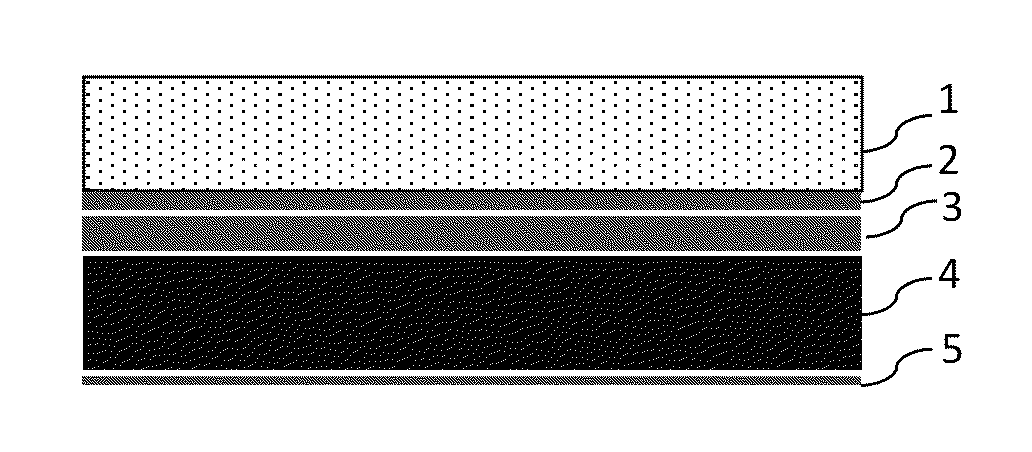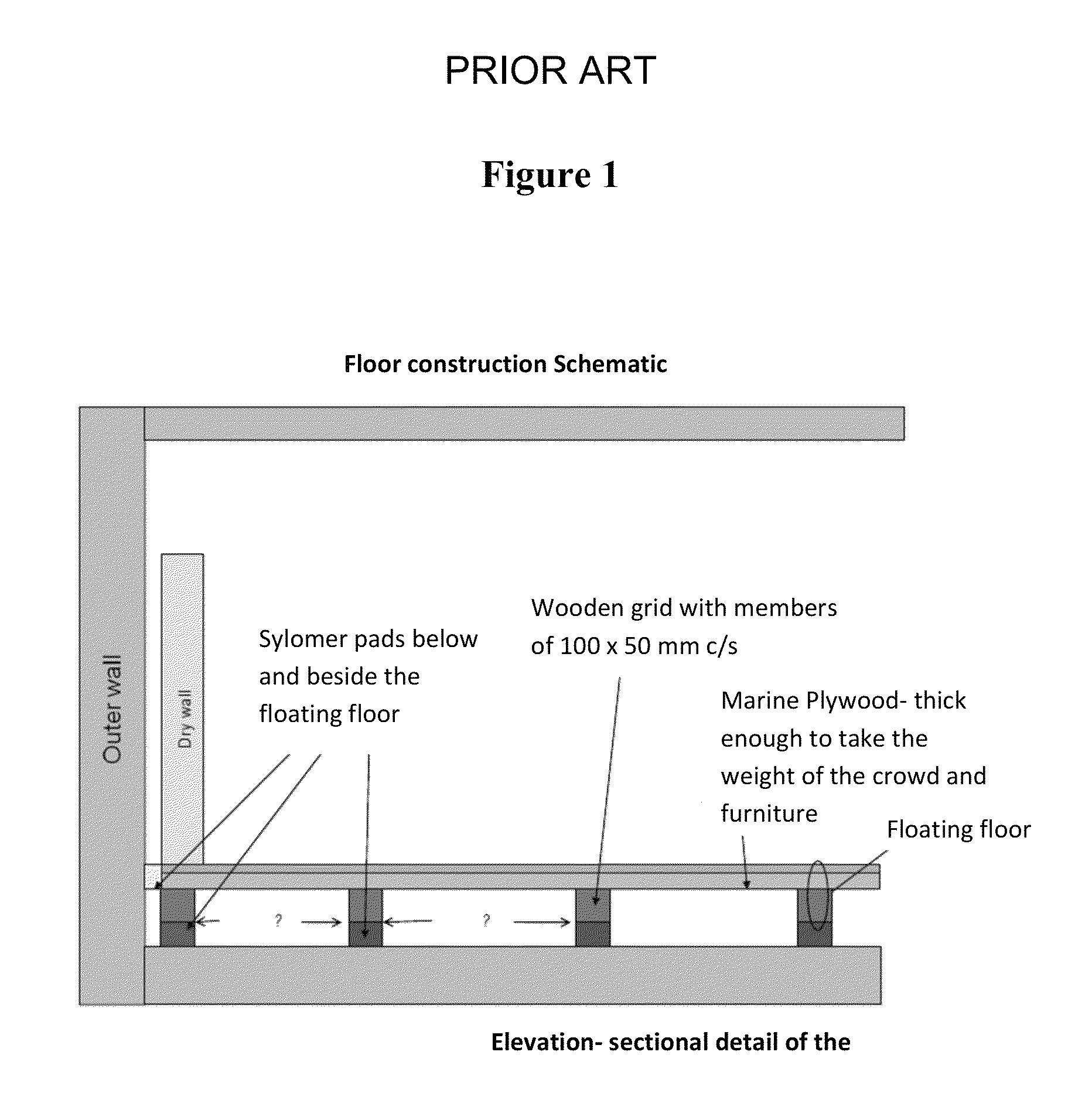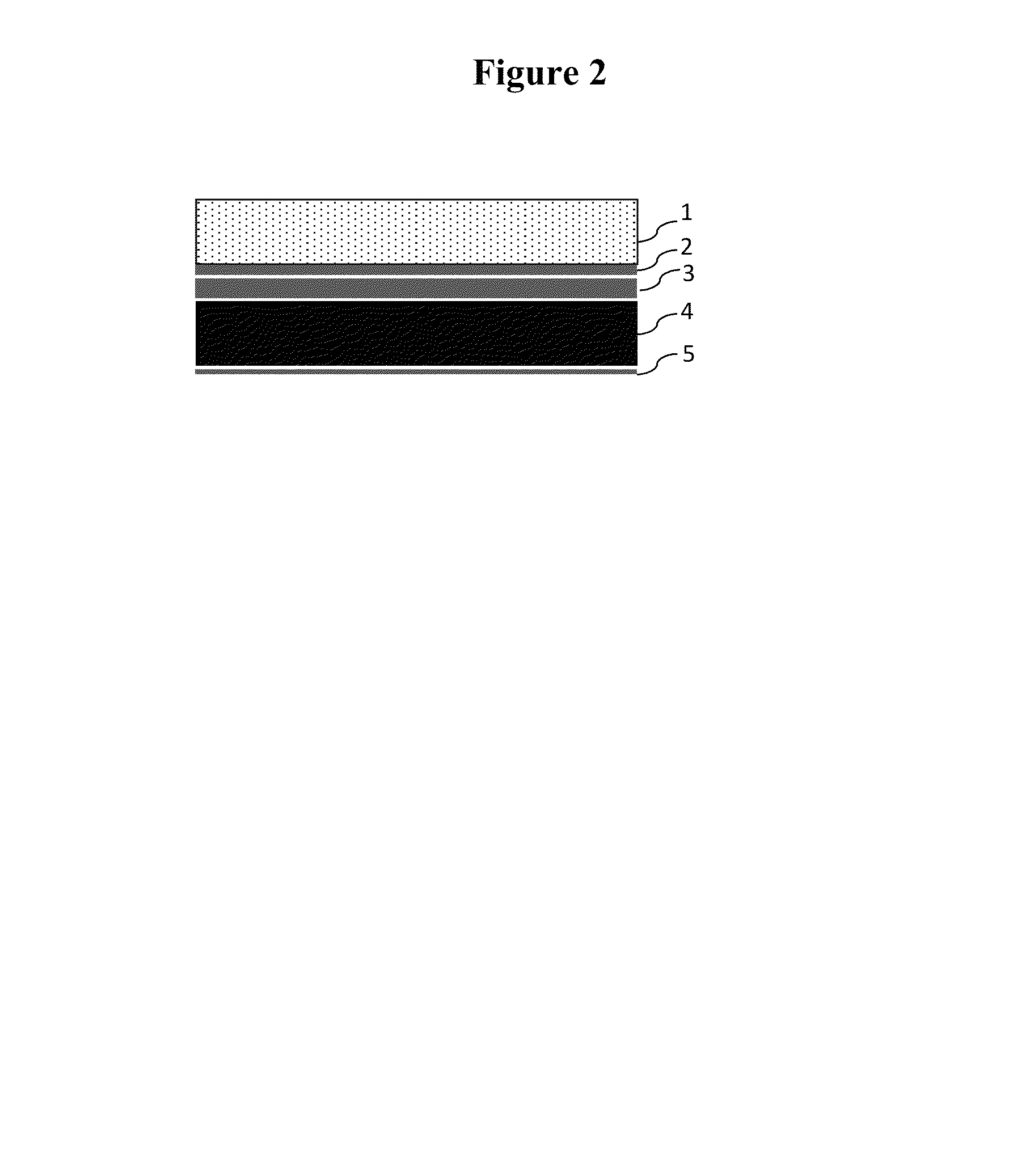Sound proof membrane
a sound-proof membrane and membrane technology, applied in the direction of adhesive processes, floors, building components, etc., can solve the problems of reducing the degree of noise vibration of reducing the intensity of structure-borne noise produced by walls or floor structures when forced into vibration, and reducing the transmission of sound waves. , to achieve the effect of dissipating sound vibrational energy, preventing noise vibrations from being transmitted to the surrounding environment, and reducing the transmission of sound vibration
- Summary
- Abstract
- Description
- Claims
- Application Information
AI Technical Summary
Benefits of technology
Problems solved by technology
Method used
Image
Examples
Embodiment Construction
[0031]FIG. 2 is a schematic cross-sectional view of the construction of one embodiment. A generic example of the construction consists of a decoupling layer 1, typically adhered with an adhesive layer 2 to a barrier layer 3 with a dampening layer 4 adhered to the opposite side of the barrier layer. The separation of decoupling layer 1 from the dampening layer 4 enhances the sound reduction properties. A release material 5 can be used to prevent the dampening layer from sticking to itself if the material is wound into a roll or stacked on top of itself.
[0032]A decoupling layer is a material used in the separation of previously linked systems so that they may operate independently. The decoupling layer separates the barrier layer from the surface to be applied on the sound barrier membrane, such as tile, which will applied on the sound barrier membrane. The decoupling layer also helps reduce sound transmission. The decoupling layer 1 can consist of various types or combinations of mat...
PUM
 Login to View More
Login to View More Abstract
Description
Claims
Application Information
 Login to View More
Login to View More - R&D
- Intellectual Property
- Life Sciences
- Materials
- Tech Scout
- Unparalleled Data Quality
- Higher Quality Content
- 60% Fewer Hallucinations
Browse by: Latest US Patents, China's latest patents, Technical Efficacy Thesaurus, Application Domain, Technology Topic, Popular Technical Reports.
© 2025 PatSnap. All rights reserved.Legal|Privacy policy|Modern Slavery Act Transparency Statement|Sitemap|About US| Contact US: help@patsnap.com



